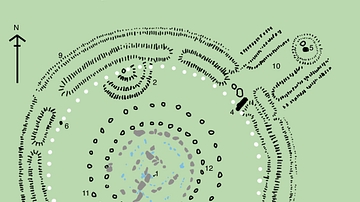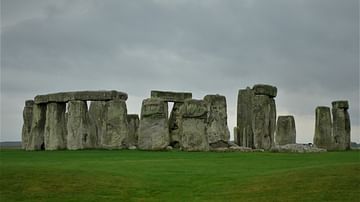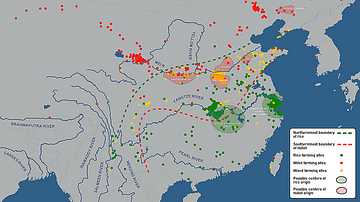Illustration
This infographic illustrates the prehistoric monument of Stonehenge, a 5,000-year-old megalithic structure located on Salisbury Plain in Wiltshire, England. It traces the site's construction phases from circa 3000 to 1600 BCE, highlighting the evolving complexity of this ancient and iconic landmark through archaeological findings and ongoing historical research.
Stonehenge has fascinated scholars and visitors alike for centuries, with formal investigations dating back to the 1660s and the pioneering work of antiquarian John Aubrey. This infographic presents the layers of discovery—from early circular earthworks to the towering sarsen stones—along with leading theories about its purpose. The monument’s enduring mystery continues to inspire new questions about prehistoric society, technology, and belief systems.
About the Author
Cite This Work
APA Style
Netchev, S. (2022, April 24). Prehistoric Monument Stonehenge, c. 3000-1600 BCE. World History Encyclopedia. Retrieved from https://www.worldhistory.org/image/15691/prehistoric-monument-stonehenge-c-3000-1600-bce/
Chicago Style
Netchev, Simeon. "Prehistoric Monument Stonehenge, c. 3000-1600 BCE." World History Encyclopedia. Last modified April 24, 2022. https://www.worldhistory.org/image/15691/prehistoric-monument-stonehenge-c-3000-1600-bce/.
MLA Style
Netchev, Simeon. "Prehistoric Monument Stonehenge, c. 3000-1600 BCE." World History Encyclopedia. World History Encyclopedia, 24 Apr 2022, https://www.worldhistory.org/image/15691/prehistoric-monument-stonehenge-c-3000-1600-bce/. Web. 29 Apr 2025.








